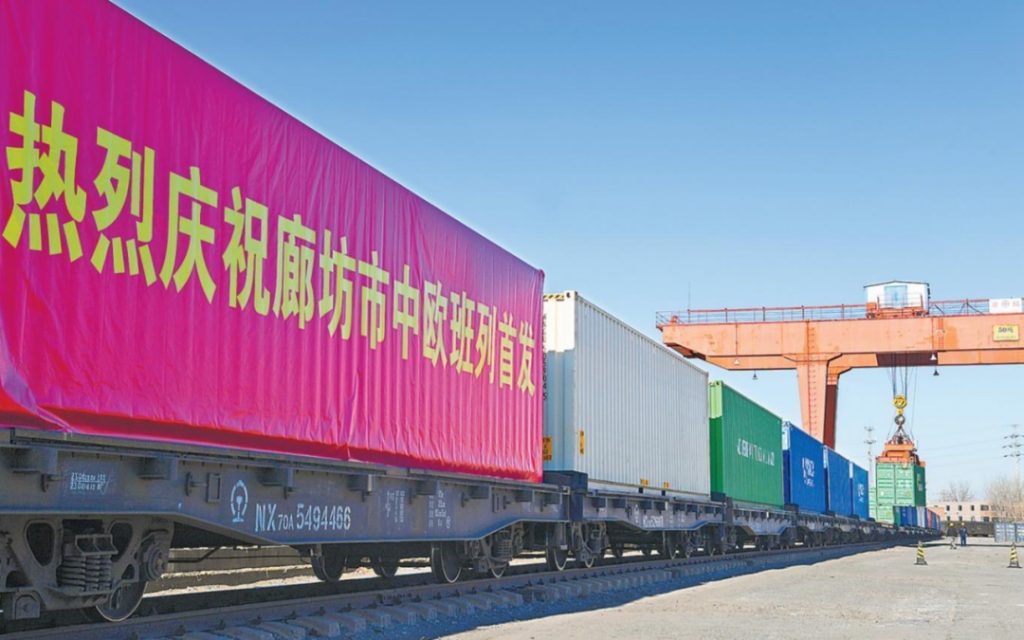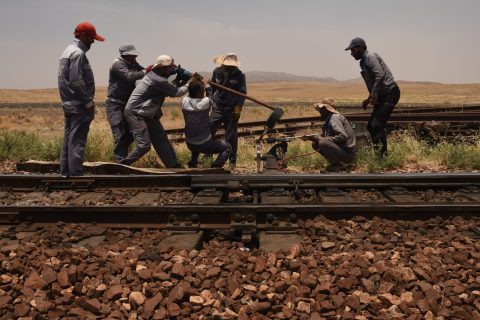China-Russia trains keep increasing with new Langfang-Moscow line

The first international freight train left the city of Langfang, in northeast China, on 25 February and is heading towards Moscow. This new service is another example of how the flow of China-Europe trains this year is heavily skewed toward Russia.
According to the official website of the Belt and Road Initiative, this inaugural China-Europe Class Train departed from the Langfang North Railway Yard Station and will leave China via the Erenhot Port. From there, the convoy will enter Mongolia and then Russia, where it will reach its final destination in Moscow.
As mentioned by the Langfang Daily, the train is expected to travel about 7,800 kilometres, with a transit time of about 17 days. The convoy is loaded with goods, including light industrial products, food products, clothing, and daily necessities, with a total value of about 2,7 million euros. The cargo owners who choose to use this international freight train are mostly local import and export enterprises in and around Langfang.
A new, faster, shorter, and more convenient route
Langfang is located at the junction of Beijing and Tianjin. Being a landlocked city, exports of its industry have to rely more on the surrounding logistics hubs to realise the collection and dispatch of goods, such as the Beijing Daxing Airport in the west and Tianjin Port in the east. Jet Young from Eurasia Logistics, the company responsible for operating the train outside Chinese borders, explained how shipping from Langfang worked before its launch.
Young said that before the opening of this line, cargoes to Russia would generally travel from the Tianjin terminal to the Russian Far Eastern ports via sea. From there, the cargo would be sent to Moscow by rail, which would be much less time-efficient than the railroads. Compared with the previously cumbersome process of loading and unloading the goods, rail transport will enable the cargo to travel smoothly and take only 17 days. Young also said that the new Langfang-Moscow train will run monthly.
China-Europe or China-Russia?
Although it is officially declared as a China-Europe train, the end destination is Moscow. Therefore, it can be considered a de facto China-Russia train. According to industry insiders, the flow of China-Europe trains this year strongly relies on trains going to Russia. In terms of policy alone, in more and more provincial and municipal new policy documents on railway transportation, the wording of “China Railway Express” has changed to “China Europe (Russia) Railway Express”.
2023 is already seeing a halt in new rail lines between China and the EU, but new train services are emerging between China and Russia. The Russian side is also stepping up investments in rail infrastructure with China, such as the Tongjiang Bridge, which was completed and opened last year. Another example could be the recently announced Priargunsk border crossing, not too far from Mongolia, which will be completed by 2030.
For freight forwarders, the main change is the congestion at yards leading to Russia. For example, the month-long congestion at the Zamyn-Ude crossing reported earlier by Mostrail is inextricably linked to the surge in traffic in the Russian direction. One question remains for the rail freight industry: will the China-Europe train be operated as a China-Russia train this year?
This article was originally published on our sister publication RailFreight.cn.





